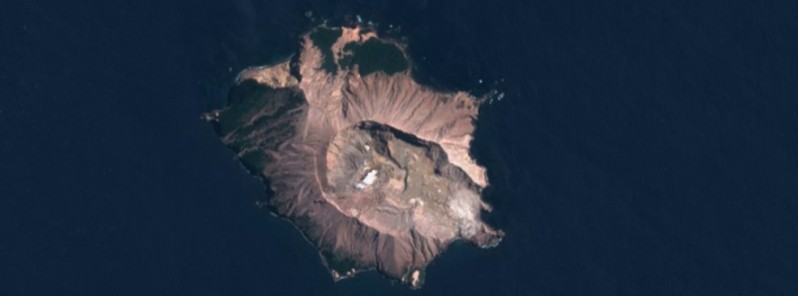Series of short-lived steam explosions at White Island following increase in volcanic tremor levels, New Zealand

A series of short-lived, low-energy steam explosions occurred on February 18, 2021, at New Zealand's White Island volcano, starting at around 13:20 UTC (02:20 LT, February 18).
The explosions took place after a small increase in volcanic tremor levels and lasted over about 100 minutes. These small events do not appear to have produced any traces of ash locally. Since the event, activity has returned to low-level, GeoNet's Duty Volcanologist Brad Scott noted.
No observations were available from the island’s webcams as it was still dark. The overall series of pulses were of a similar size to those recorded on December 29, 2020.
Volcanic tremor levels started to rise around 08:00 UTC on February 18 and stopped around 16:00 UTC, coincident with the end of the explosions.
Sudden, small steam explosions can occur with little or no warning, Scott said.
"Small explosions like those this morning and on December 29, 2020, can be recorded on our seismic (ground vibrations) and acoustic (pressure wave in the atmosphere) monitoring network."
A gas flight on February 18 showed no changes in gas flux or crater conditions from a month earlier. The level of seismic tremor had been slightly above background in the two days preceding the explosions but has since returned to background levels. As a result, the Volcanic Alert Level remains at 1 and the Aviation Color Code remains at Green.
The Volcanic Alert Level reflects the current level of volcanic unrest or activity and is not a forecast of future activity, Scott said.
"Volcanic Alert Level 1 indicates the primary hazards are those expected during volcanic unrest; including the discharge of steam and hot volcanic gases, earthquakes, landslides and hydrothermal activity."
Eruptions can still occur with little or no warning. The main plausible triggers for a sudden eruption remain the collapse of unstable material in an active vent and the possible ingress of water underground onto the shallow magma body.
Geological summary
Uninhabited 2 x 2.4 km (1.2 x 1.5 miles) White Island, one of New Zealand's most active volcanoes, is the emergent summit of a 16 x 18 km (10 x 11.2 miles) submarine volcano in the Bay of Plenty about 50 km (31 miles) offshore of North Island.
The island consists of two overlapping andesitic-to-dacitic stratovolcanoes; the summit crater appears to be breached to the SE, because the shoreline corresponds to the level of several notches in the SE crater wall. Volckner Rocks, four sea stacks that are remnants of a lava dome, lie 5 km (3.1 miles) NNE.
Intermittent moderate phreatomagmatic and strombolian eruptions have occurred throughout the short historical period beginning in 1826, but its activity also forms a prominent part of Maori legends.
Formation of many new vents during the 19th and 20th centuries has produced rapid changes in crater floor topography. The collapse of the crater wall in 1914 produced a debris avalanche that buried buildings and workers at a sulfur-mining project. (GVP)
Featured image credit: Copernicus EU/Sentinel-2, TW. Acquired February 4, 2021

Commenting rules and guidelines
We value the thoughts and opinions of our readers and welcome healthy discussions on our website. In order to maintain a respectful and positive community, we ask that all commenters follow these rules.